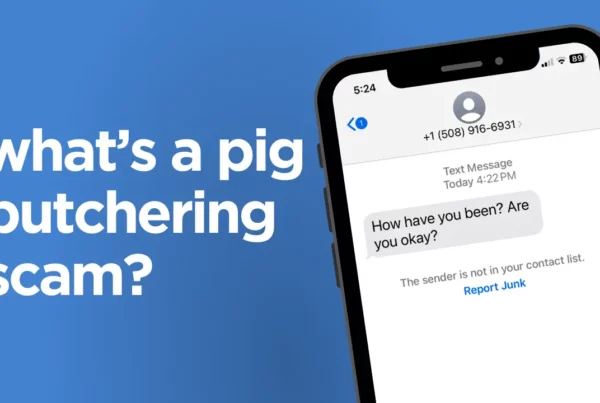
Scams are everywhere as criminals try to cash in by stealing money or valuable personal information from victims. And given our modern reliance on technologies like smartphones and the internet, if you haven’t been a victim of a scam, you’ve likely been targeted by one. This underscores the critical importance of scam awareness and prevention in safeguarding ourselves and our loved ones against these malicious activities.
Definitions of Scam Terms
Four key terms are essential to understand when discussing scams:
- Scam: a fraudulent operation that has the intention of stealing money or valuable financial or personal information
- Social engineering: the techniques used to manipulate a victim into divulging information or taking a specific action
- Phishing: when a scammer poses as a legitimate person or company online to steal money or personal information
- Vishing: when a scammer poses as a legitimate person or company over the phone to steal money or personal information.
Many modern scams try to push their victim into a corner, forcing them to decide on the spot—i.e., pay the money, provide personal information, or face the consequences. Scammers will use recent headlines to fuel their scams; they’ll pose as a local retailer you frequent or even a family member in need, hoping you’ll give up your money or personally identifiable information (PII).
Analysis of Scam Terms
Social engineering Scammers continue fine-tuning their social engineering skills, developing new ways to convince you to hand over your money and PII. A few techniques that scammers use include:
- Familiarity: If you’ve seen someone around or heard their name before, you’re more likely to trust that they are legitimate. For example, an email appears to be from a big-name company or representative of your financial institution).
- Hostility: It’s human nature to avoid conflict by complying with aggressive people. If you consider somebody a threat, you may be more likely to do what they tell you. For example, a call from somebody posing as a police officer demanding a fine be paid in exchange for expunging an arrest warrant).
- Playing Detective: It’s easier than ever for someone to gather information about you. They can find your location and interests by visiting your social media accounts. They also can rummage through your trash for credit card forms and bank statements. There are many places where cybercriminals can obtain your personal information, which can help in their scams.
- Phishing:
- vishing and smishing scams are the most common cyber attacks worldwide. Phishing can be executed on several platforms: emails, phone calls or text messages, and deceptive websites.
- Phishers create seemingly legitimate emails and rely on you to click the provided link. These emails are designed to look official and often develop a sense of urgency. Hence, victims act quickly, clicking an embedded link before thinking. Those links typically send you to another fraudulent page, usually bearing legitimate businesses’ logos or brand names to convince you of its authenticity further. Phishing emails can also launch damaging malware or spyware activated after clicking a link, sometimes without you even being aware.
- Phishing websites are designed to look like legitimate sites to fool visitors into inputting information such as a credit card number, email address, phone number, Social Insurance Number, etc. Anyone convinced the site is legitimate is likelier to divulge personal information to scammers.
- Vishing:
- Vishing, or voice phishing, is a form of phishing by phone. Scammers will pose as bank representatives, friends of friends, a restaurant, or another trusted person to steal your money or PII. The difference between phishing and vishing is the platform through which the scam is presented. Rather than answering unexpected calls, it is easy for everyone to hide behind a call screener today, making vishing slightly less common than email or text scams.
- Smishing:
- Smishing is when a scammer sends links by SMS or text to unsuspecting victims, similar to a phishing email. Given the shorter nature of a text message, smishing attacks try to get the victim to click on the link by offering more details to claim a prize, a refund or other messages to create urgency on behalf of the recipient.
About Wedgwood Insurance
Wedgwood Insurance has offices in St. John’s & Corner Brook and is Newfoundland & Labrador’s largest independent insurance broker. We provide straightforward home, auto & business insurance advice.
With over 260 Google My Business reviews, experience the Wedgwood difference with expert advice from our dedicated team. We ensure that every client has the coverage that best suits their needs through upfront complimentary consultations and midterm reviews.
Contact Us






